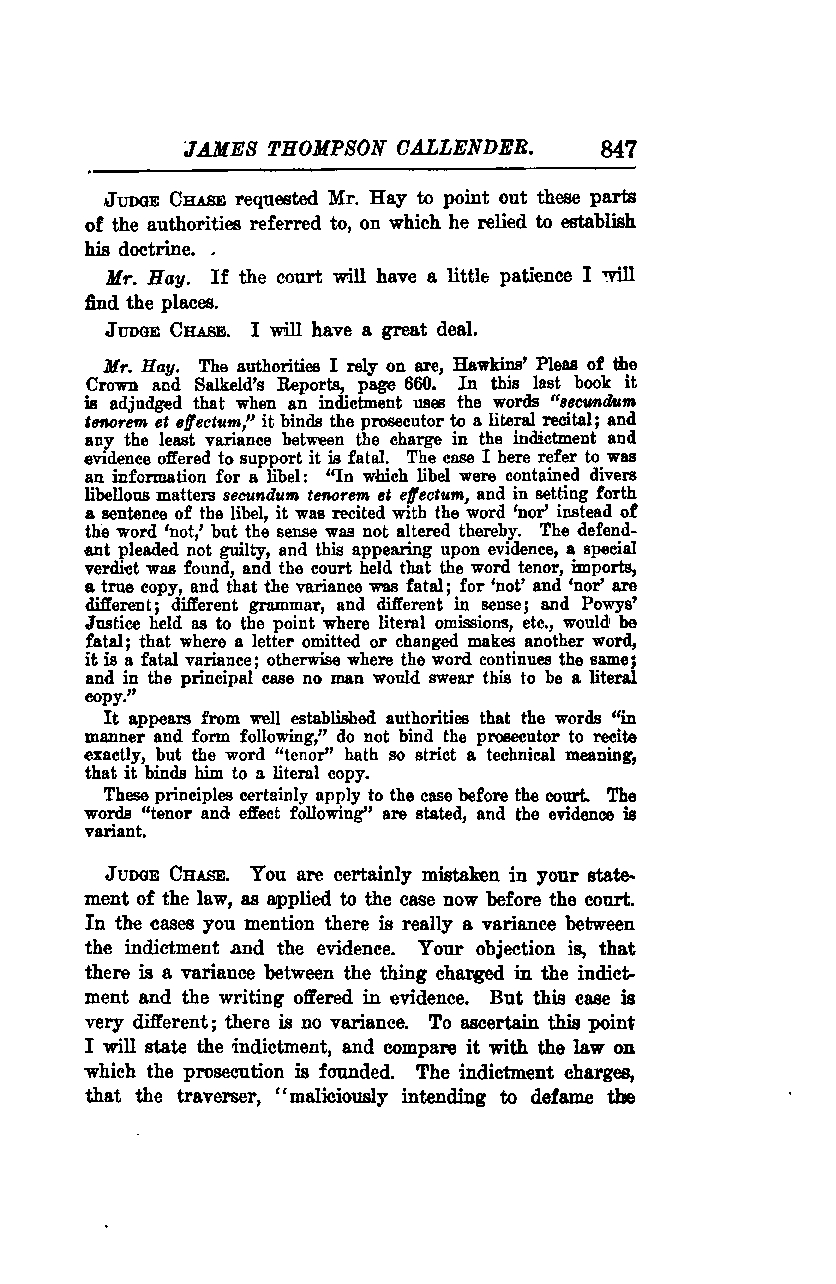Reading Time: 3 minutes [424 words]

Here is the translated text as follows:
JAMES THOMPSON CALLENDER
Judge Chase requested Mr. Hay to point out the specific parts of the authorities he referred to, on which he relied to establish his doctrine.
Mr. Hay responded, "If the court will have a little patience, I will find the places."
Judge Chase replied, "I will have a great deal."
Mr. Hay continued, "The authorities I rely on are Hawkins’ Pleas of the Crown and Salkeld’s Reports, page 660. In this last book, it is adjudged that when an indictment uses the words 'secundum tenorem et effectum,' it binds the prosecutor to a literal recital; and any the least variance between the charge in the indictment and the evidence offered to support it is fatal. The case I refer to was an information for a libel: 'In which libel were contained divers libellous matters secundum tenorem et effectum,' and in setting forth a sentence of the libel, it was recited with the word 'nor' instead of the word 'not,' but the sense was not altered thereby. The defendant pleaded not guilty, and this appearing upon evidence, a special verdict was found. The court held that the word 'tenor' imports a true copy, and that the variance was fatal; for 'not' and 'nor' are different—different grammar, and different in sense. Powys’ Justice held as to the point where literal omissions, etc., would be fatal; that where a letter omitted or changed makes another word, it is a fatal variance; otherwise, where the word continues the same. In the principal case, no man would swear this to be a literal copy."
It appears from well-established authorities that the words "in manner and form following" do not bind the prosecutor to recite exactly, but the word "tenor" has such a strict technical meaning that it binds him to a literal copy.
These principles certainly apply to the case before the court. The words "tenor and effect following" are stated, and the evidence is variant.
Judge Chase remarked, "You are certainly mistaken in your statement of the law as applied to the case now before the court. In the cases you mention, there is really a variance between the indictment and the evidence. Your objection is that there is a variance between the thing charged in the indictment and the writing offered in evidence. But this case is very different; there is no variance. To ascertain this point, I will state the indictment and compare it with the law on which the prosecution is founded. The indictment charges that the traverser 'maliciously intending to defame the...'"